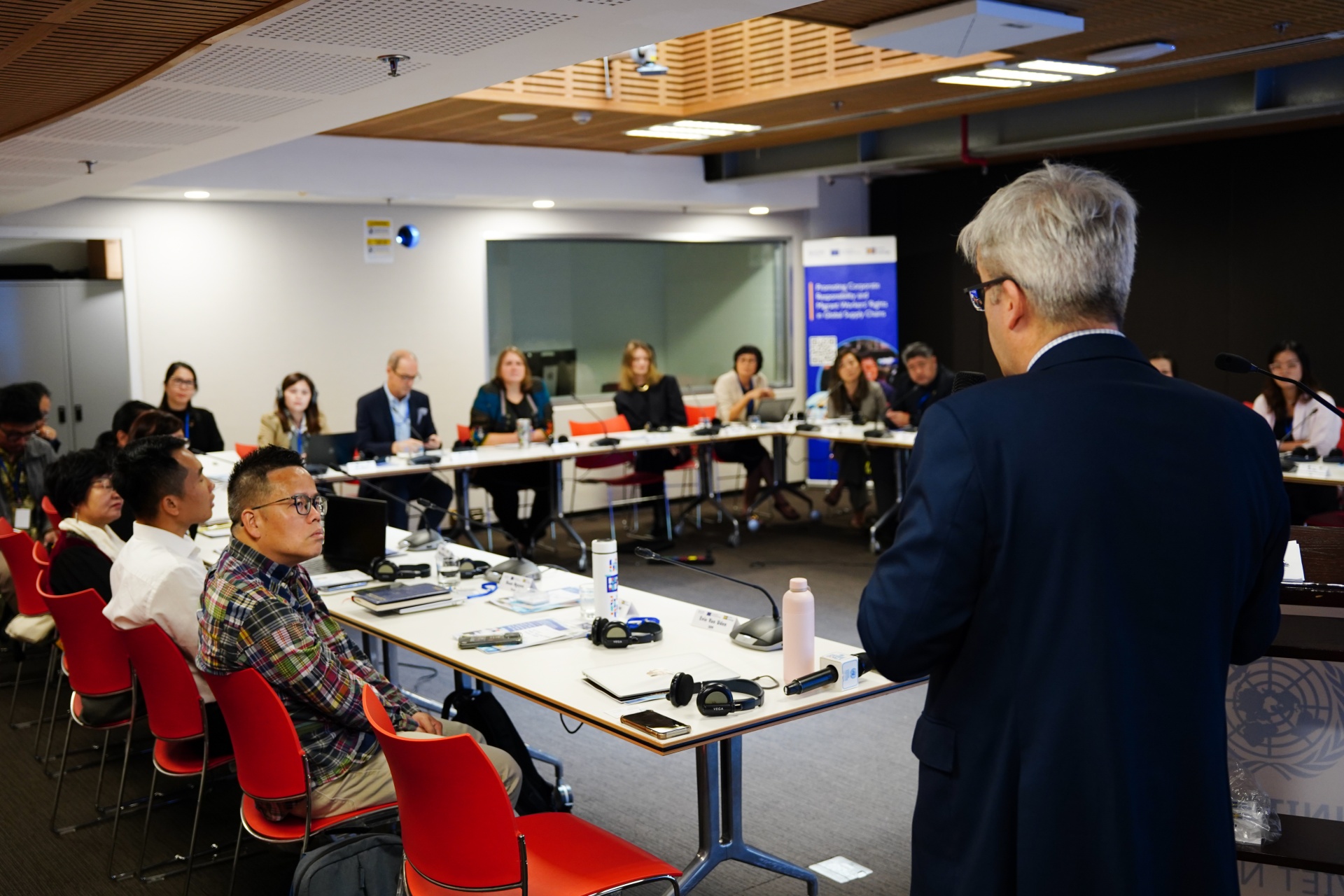‘Minimalist’ lifestyles may not effectively tackle overconsumption. Can performance management help? – The Conversation

Report on Overconsumption and Sustainable Development Goals
Introduction: The Challenge to Sustainable Consumption and Production
Overconsumption of material goods presents a significant barrier to achieving the 2030 Agenda for Sustainable Development. This pattern is a primary driver of resource depletion and environmental degradation, directly undermining progress on SDG 12 (Responsible Consumption and Production), SDG 13 (Climate Action), and SDG 15 (Life on Land). Furthermore, it has been linked to diminished personal well-being and mental health challenges, creating obstacles for SDG 3 (Good Health and Well-being). While minimalism has emerged as a popular lifestyle choice to counter this trend, its practical application reveals limitations. This report assesses the viability of minimalism and proposes an alternative framework, based on performance management principles, to systematically foster consumption patterns aligned with the Sustainable Development Goals.
Minimalism as a Strategy for SDG 12: An Assessment
Origins and Alignment with Sustainability Principles
Minimalism, as a lifestyle movement, originated as a form of resistance to consumer culture. Its core tenets of reducing material possessions and ecological harm align conceptually with the objectives of SDG 12, which calls for a fundamental shift towards sustainable consumption and production patterns.
Limitations and Contradictions
Despite its intentions, minimalism faces several challenges that undermine its effectiveness as a scalable solution for achieving SDG 12.
- Psychological Barriers: Cognitive biases such as the endowment effect and loss aversion make it inherently difficult for individuals to part with possessions, limiting widespread adoption.
- Paradox of Conspicuous Consumption: The movement has, in some cases, transformed into a new form of status signaling. Achieving a minimalist aesthetic can involve significant expenditure on high-end, multipurpose items, thereby perpetuating consumption rather than reducing it. This competitive aspect runs counter to the ethos of responsible consumption.
- Lack of Systemic Structure: Minimalism remains a subjective, individualistic pursuit. It lacks a structured, quantifiable framework to guide behavior change on a broad scale, which is necessary to meet global targets like those outlined in the SDGs.
A Performance Management Framework for Responsible Consumption
Core Principles and Methodologies
Performance management, a discipline from business management, offers a structured approach to translate abstract goals into measurable actions. Its application could provide a robust framework for guiding individuals toward consumption habits that support the SDGs. Key components include:
- Setting Specific Objectives: Utilizing frameworks like SMART (Specific, Measurable, Attainable, Relevant, Time-bound) goals to define clear consumption targets.
- Tracking and Monitoring Progress: Systematically measuring consumption patterns against established goals.
- Providing Continuous Feedback: Offering regular updates on performance to reinforce positive behaviors and identify areas for improvement.
- Recognizing and Rewarding Results: Acknowledging the achievement of sustainable consumption milestones to maintain motivation.
This approach builds on established principles such as Management by Objectives and the Balanced Scorecard, which emphasize that “what you measure is what you get.”
Application to Advance Sustainable Development Goals
Evidence for Goal-Setting in Waste Reduction
Applying performance management principles to consumption is supported by empirical evidence. Research demonstrates that structured interventions are more effective than general awareness campaigns in promoting behaviors aligned with SDG 12.
- Studies show that goal-setting interventions prompting individuals to commit to specific targets lead to significant reductions in waste and resource use.
- A recent study found that consumers who set individual goals reduced clothing purchases by an average of 58.59% after one month, directly addressing a key area of overconsumption targeted by SDG 12.
Leveraging Innovation and Technology for SDG 9 and SDG 12
In line with SDG 9 (Industry, Innovation, and Infrastructure), technology can be leveraged to implement a performance management framework for consumers. Digital tools and gamification techniques, successfully used in health and finance apps, can be adapted to promote sustainable behaviors.
- Gamification Elements: Features like activity streaks, progress tracking, and rewards can sustain user motivation and engagement in achieving consumption goals.
- Proposed Application: An application could be developed to help users set and track goals related to non-essential purchases, spending, and the environmental impact of their consumption. By providing personalized, real-time feedback and rewarding sustainable choices, such a tool could directly contribute to the targets of SDG 12.
Conclusion and Recommendations
A Path Forward for Sustainable Consumption
While minimalism effectively raises awareness about overconsumption, its subjective nature limits its impact. A performance management framework offers a structured, quantifiable, and scalable alternative for fostering behaviors consistent with the Sustainable Development Goals. The most effective solution likely lies in an integrated approach that combines the ethical awareness promoted by minimalism with the structured discipline of performance management.
Recommendations
- Develop Technology-Driven Tools: App developers and technology firms should prioritize the use of behavioral design and gamification to create tools that guide consumers toward achieving meaningful sustainability goals, directly supporting SDG 12 and SDG 3.
- Integrate Performance Metrics: Public campaigns and corporate sustainability initiatives should move beyond awareness-raising to incorporate structured goal-setting and feedback mechanisms for consumers.
- Address Implementation Barriers: Further research is needed to address challenges such as data integration, user engagement, and privacy concerns to ensure the effective and ethical implementation of performance management systems for consumption.
Analysis of Sustainable Development Goals in the Article
1. Which SDGs are addressed or connected to the issues highlighted in the article?
The article addresses two primary Sustainable Development Goals (SDGs) by focusing on the dual impacts of overconsumption on the environment and human well-being.
- SDG 12: Responsible Consumption and Production: This is the most central SDG in the article. The text opens by identifying “overconsumption of material goods” as a “key driver of resource depletion” and a cause of “environmental crises.” The entire discussion, from the critique of minimalism to the proposal of performance management techniques, revolves around finding effective solutions to unsustainable consumption patterns. The article explicitly mentions reducing “ecological harm,” “waste,” and “resource use,” which are core components of SDG 12.
- SDG 3: Good Health and Well-being: The article directly connects overconsumption to negative health outcomes, stating it can “lead to a host of mental health challenges” and diminish “personal well-being.” It notes that minimalism originally aimed to “improve well-being” and that the ultimate goal of proposed solutions is to promote “personal happiness” and guide consumers toward “healthier consumption habits.” This establishes a clear link to the promotion of mental health and well-being as outlined in SDG 3.
2. What specific targets under those SDGs can be identified based on the article’s content?
Based on the issues discussed, several specific targets under SDG 12 and SDG 3 can be identified.
-
Under SDG 12 (Responsible Consumption and Production):
- Target 12.2: By 2030, achieve the sustainable management and efficient use of natural resources. The article’s focus on overconsumption as a “key driver of resource depletion” directly relates to this target. The proposed solutions aim to reduce the overall consumption of material goods, thereby promoting more efficient use of natural resources.
- Target 12.5: By 2030, substantially reduce waste generation through prevention, reduction, recycling and reuse. The article references a systematic review showing that goal-setting interventions can lead to “significantly greater reductions in waste and resource use,” which aligns with the goal of waste reduction through prevention and reduction.
- Target 12.8: By 2030, ensure that people everywhere have the relevant information and awareness for sustainable development and lifestyles in harmony with nature. The proposed app-based solution is designed to provide “personalised, real-time feedback to users about the environmental and personal-finance impacts of their consumption” and use “information about environmental impact” to guide choices. This directly supports the goal of empowering consumers with information to adopt sustainable lifestyles.
-
Under SDG 3 (Good Health and Well-being):
- Target 3.4: By 2030, reduce by one third premature mortality from non-communicable diseases through prevention and treatment and promote mental health and well-being. The article’s assertion that overconsumption leads to “mental health challenges” and that solutions should promote “personal happiness” and “healthier, more mindful choices” connects directly to the promotion of mental health and well-being aspect of this target.
3. Are there any indicators mentioned or implied in the article that can be used to measure progress towards the identified targets?
The article does not cite official SDG indicators, but it implies or directly mentions several quantifiable measures that could serve as indicators of progress.
- Reduction in consumption of specific goods: The article cites a study where participants “reduced clothing purchases after one month ‘on average by 58.59%.'” This suggests that tracking the percentage reduction in the purchase of non-essential goods (e.g., clothing, electronics) can be a direct indicator for Target 12.2.
- Waste and resource use reduction: The text refers to studies measuring “reductions in waste and resource use” as a result of behavioral interventions. This implies that the volume of household waste generated or the quantity of resources consumed per capita are measurable indicators for Target 12.5.
- Adoption of tracking tools: The proposal for an app that helps manage consumption implies that the number of users actively engaging with such tools could be an indicator for Target 12.8. The article mentions apps like MyFitnessPal and PocketGuard, whose success is measured by user engagement, streaks, and goal achievement, suggesting similar metrics for a consumption-focused app.
- Self-reported well-being: While not providing a specific metric, the article’s focus on “personal well-being,” “personal happiness,” and reducing “mental health challenges” implies that progress towards Target 3.4 could be measured through surveys or self-reported data on well-being and stress levels related to consumption habits.
4. SDGs, Targets, and Indicators Identified in the Article
| SDGs | Targets | Indicators (Mentioned or Implied in the Article) |
|---|---|---|
| SDG 12: Responsible Consumption and Production | Target 12.2: Achieve the sustainable management and efficient use of natural resources. |
|
| Target 12.5: Substantially reduce waste generation. |
|
|
| Target 12.8: Ensure people have relevant information and awareness for sustainable lifestyles. |
|
|
| SDG 3: Good Health and Well-being | Target 3.4: Promote mental health and well-being. |
|
Source: theconversation.com
What is Your Reaction?
 Like
0
Like
0
 Dislike
0
Dislike
0
 Love
0
Love
0
 Funny
0
Funny
0
 Angry
0
Angry
0
 Sad
0
Sad
0
 Wow
0
Wow
0
















































:focal(1500,1000)/https://media.globalcitizen.org/a6/9a/a69a4720-d8a1-4715-b596-18738d03c05c/rotary_polio_hero_image.jpg?#)







/countries/sri-lanka/photo-credit---dmc-sri-lanka.tmb-1200v.jpg?sfvrsn=dc298bcc_1#)



















